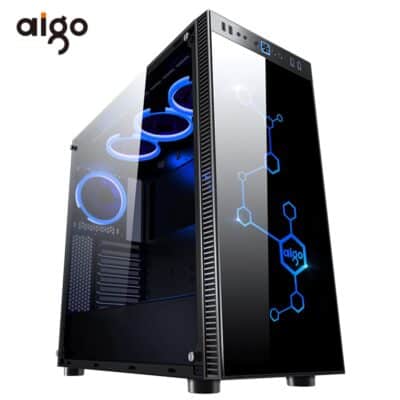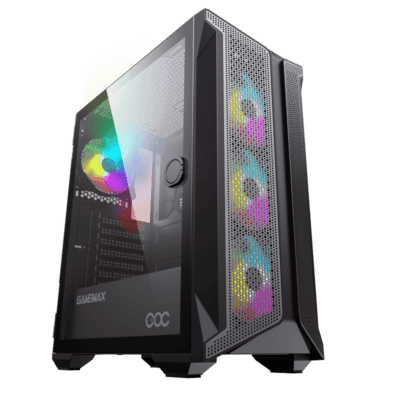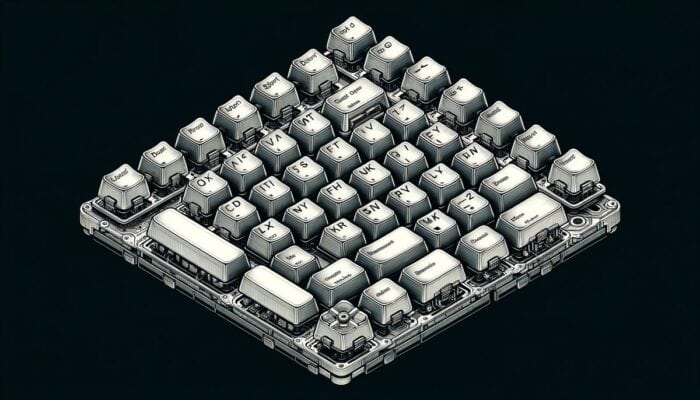Uncategorized
Micro-ATX vs Mini-ITX – 3 Best Recommendation from Work Rift
Micro-ATX vs Mini-ITX vs ATX, What’s the Difference?
Looking for an introduction to the various motherboard form factors?
Choosing the best PC case can be challenging.
We’ve outlined the key distinctions between mini-ITX case, micro-ATX, and normal ATX motherboards in this article.
Should you choose a micro-ATX mini-ITX standard ATX motherboard or a micro-ATX mini-ITX…
…standard ATX motherboard? If you’re building a new computer, a motherboard is one of the most critical…
…components you’ll need to buy. Not all motherboards, however, are made equal.
Motherboards differ in terms of features, price, and size. The major issue that newbie builders…
…have is understanding the differences between motherboard form-factors (or sizes).
The main distinctions between motherboard form-factors will be discussed in this article.
That should help you figure out which form-factor motherboard is right for you and your build.
This is what Peter said…
If you move around a lot and believe portability to be important, I recommend mini-ITX enclosures.
These cases are also suitable for HTPCs, as they do not take up much space.
Aside from that, you might consider purchasing a micro-ATX case, since they offer a wider range of features.
microATX was explicitly designed to be backward-compatible with ATX. The mounting points of microATX motherboards are a subset of those used on full-size ATX boards, and the I/O panel is identical.
Micro-ATX according to Wikipedia
Our Top Picks
Aigo Darkflash ATX/M-ATX/ITX Tempered Glass PC Case

F-panel’s drill cutting design provides a fall of vision and improves the texture.
The black side glass provides a low-profile solution for showing off the light effect.
In addition, the tempered glass design makes it possible to see more of the inside of the chassis.
Three millimeters of thick tempered glass are used to make the chassis strong.
In order to form the metal structure with impressive beauty, the 0.45mm SPCC is painted.
The magnetic top cover protects the chassis from dust and facilitates cleaning more easily.
Aigo Desktop Computer Gaming Case Mid-Tower ATX Game

- Black technology MINI chassis specifications:
- Color: black
- Net weight: 4.5Kg
- Package weight: 5.5kg
- Size: 374*185*380mm
- Packing size: 395*202*395mm
- Radiator: height within 165 mm
- Chassis fan: support installing 8*12 cm fan
- Plate thickness: 0.45mm SPCC
- Graphics card: the length does not exceed 325mm
- Motherboard: matx/itx
- PSU: ATX power supply
- HDD support: 3.5’HDD *2
- SSD support: 2.5’SSD *2
- Expansion: The chassis supports USB3.0*1 port + USB2.0*2 port + HD AUDIO*2 port
- Left panel: Acrylic
- Water cooling support: 240 water cooling at the top; 120 water cooling at the rear
Gamemax Brufen C1 Mid-Tower Chassis Gaming PC Case

COC stands for Cooling & Over-Clocking, which means cooling overclocking.
The GameMax Brufen C1 COC Gaming Chassis was designed for Intel Gen 10th CPU cooling solutions.
It’s a brand-new heat-dissipation construction. To help cool down various accessories in the PC system…
…a Turbo fan is attached to the main board of the chassis, forming a new T-type targeted air duct inside the PC system.
The Brufen C1 supports up to 8 fans and comes with a V2.0 PWM ARGB hub that connects…
…directly to your motherboard through a 3pin ARGB connection…
…allowing you to control your fans and LED strip using the mobo’s software.
The Brufen C1 is a superb and unique Mid-Tower PC gaming case with room for an E-ATX motherboard…
…an all-black chassis featuring the first cooling and overclocking system providing incredible airflow…
…throughout the chassis, and with five built-in fans, four of which are ARGB fans, the Brufen…
…not only has the power and resources to perform at the very highest level, but it also looks fantastic!
A T-shaped targeted air duct and a COC turbo fan, both of which work as an active overall temperature…
…management solution, are two noteworthy features that we have added in the Brufen…
…that other participants in the market have not (MB, VRM, PCH & CPU).
Reduces the overall temperature within your computer, ensuring that all of your associated…
…hardware runs smoothly 100 percent of the time.
Micro-ATX vs Mini-ITX vs ATX: A Size Comparison
The dimensions of micro-ATX (mATX), mini-ITX, and normal ATX motherboards…
…are the most significant difference: 12.0′′ x 9.6′′ is the standard ATX size. 9.6′′ x 9.6′′ Micro-ATX 6.7′′ x 6.7′′…
…Mini-ITX mATX motherboards are the same width as regular ATX motherboards…
…however they are a few of inches shorter. Standard ATX motherboards can have more PCIe lanes because…
…of the height advantage. As a result, they’re better suited to multi-GPU configurations or customers…
…that want to employ several PCIe devices. Mini-ITX motherboards, on the other hand…
…are smaller than micro-ATX motherboards in both height and breadth.
Typically, they only have one PCIe lane. Their benefit, on the other hand, comes from their smaller size.
They’re usually more compatible with compact form-factor casings than both of them.
The most important thing to remember about the sizes of these motherboards….
…is that they mostly influence what PC case you may (or cannot) use.
For example, if you wish to build a tiny form-factor gaming PC, you will almost certainly be unable…
…to use a regular ATX motherboard. It’s also possible that you won’t be able to utilize a micro-ATX motherboard in it.
If you go with a larger case, though, you’ll probably be able to put any motherboard in it.
Because most medium-to-larger cases can fit smaller form-factor motherboards, this is the case.
(However, because your components will be cramped up in the upper left corner of your case…
…you may not want to use a mini-ITX motherboard in a larger chassis for cosmetic reasons.)
However, it is crucial to note that the contrary is not true, and that regular ATX or mATX motherboards…
…cannot be used in mini-ITX cases, and conventional ATX motherboards cannot be used in micro-ATX cases.
The Benefits and Drawbacks of Each Form-Factor Perhaps you’re thinking to yourself…
“What makes you think I’d want anything other than a regular ATX motherboard?”
Which Motherboard Form-Factor Should You Choose?
If you’ve gone over the advantages and disadvantages of each of the three most popular motherboard…
…form factors listed above, you probably already know which motherboard is best for you.
But, if you’re still undecided about which motherboard is best for you, here are a few frequent use cases…
…and the motherboard form factor that makes the most sense for them:
1. You want to build a low-cost gaming PC. A micro-ATX motherboard is your best bet if you want…
…to build a budget-friendly gaming PC. The reason for this is that no component has a greater impact…
…on your in-game performance than your graphics card, processor, and memory.
As a result, while creating a budget-friendly gaming PC, the usual rule of thumb is to devote as much…
…of your budget as possible to those three components. As a result, you’ll have to compromise on some…
…of your other components’ quality (but this doesn’t mean you should buy low-quality components).
Fortunately, mATX motherboards are ideal for low-cost gaming PCs because they retain all of the…
…essential functionality of normal ATX motherboards. Standard ATX motherboards have superior looks…
…more PCIe slots, and beefier VRMs for overclocking, which are the only substantial differences.
And, since most budget-conscious gamers won’t be able to afford the components that are better…
…suited to the features than ordinary ATX motherboards provide, users who don’t wind up paying…
…the extra money on ATX boards shouldn’t feel left out.
2. You want to construct a high-end gaming computer. You’ll probably want to look at a higher-end…
…standard ATX motherboard if you want to build a high-end gaming PC with multiple graphics cards…
…or if you want to overclock your processor and push it to the limit, or if you want a really fancy-looking…
…motherboard as part of a nice color-coordinated build you’re doing.
While regular ATX motherboards offer the very minimum in terms of features, if you want a high-end board…
…you’ll almost certainly have to go with a standard ATX (or even a larger extended ATX) motherboard.
3. You want to design a PC with a compact form factor. If you want to build a PC with a compact footprint…
…whether for portability or a minimalistic look, a smaller mini-ITX or micro-ATX motherboard is your best bet.
Mini-ITX motherboards will, of course, be your best bet if you want to go as compact as possible.
Smaller form-factor PCs are typically appropriate for gamers who desire a portable system…
…(for example, to take to LAN parties) or HTPC systems.
Sum Up
Size is the main difference between standard ATX, micro-ATX, and mini-ITX motherboards.
The industry sizes for each are as follows:. Standard ATX is larger in size and has more PCIe lanes.
These motherboards work best for multi-GPU setups or computers that use multiple processors.
Conclusion
And, that is all for Micro-ATX vs Mini-ITX case you need to know…
How do you choose your pc case?
Let us know your experience on the comment section!
Related Articles For You!
- You may like: How Many PC Case Fans Do I Need? Superb 4 Thigs That You Need To Know About This
- You may enjoy this article about: Do All PC Cases Fit All Motherboards? Superb 3 Ways To Choose The Right PC Case For Your Motherboard
- This article may be interesting: What Size PC Case Do I Need? Superb 3 Facts Of That You Should Know About This
Our Latest Posts:

Was this helpful?
I’m Roselyn T., a self-proclaimed tech geek on a mission to unravel the wonders of the digital realm. As a dedicated reviewer of computers and laptops, I share my insights and expertise on the latest tech trends and innovations on my blog, workrift.com. With a passion for demystifying the tech landscape, I not only offer in-depth reviews but also provide practical tips to navigate the ever-evolving world of technology. I’m also an author of the book “AP Computer Science A Premium, 2024: 6 Practice Tests + Comprehensive Review + Online Practice (Barron’s AP)” which is sold on Amazon. Join me as we explore the exciting intersection of form and function in the realm of gadgets and gear.








